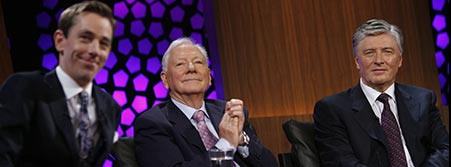TV FACES NEW TEST |
 |
| IAN MCSHANE SAYS CONSUMERS NOW ENGAGE WITH CONVERGED MEDIA AND TV MUST RELAY CONTENT IN LINE WITH NEW MARKET DEMANDS |
When I first began working in TV research 20 years ago, the medium was king. The Late Late Show regularly produced all adult TVRs of between 25 to 30 and World Cup qualifier matches reached at least 90 per cent of all adults through TV homes and elsewhere. The iconic Guinness Anticipation TV ad with Joe McKinney dancing around a pint to Perez Prados Guaglione reached 100 per cent all adult 1+ coverage within days of its broadcast.
Media worked side-by-side, often in tandem, but always conceptually in separate silos. Each medium had a role to fulfil and everyone knew and understood the plan. If TV was the all-reaching big audience builder, print allowed a more detailed or nuanced understanding of the advertised brand. Outdoor built awareness across urban audiences and radio allowed messages seep into consumer consciousness by way of its undulating background beat.
There was no internet. Back then, I attended an Esomar conference in Paris about the future of TV. The audience sat agog as we heard tell of story after story about the imminent arrival of the information superhighway, where digital TV would supplant analogue and we would be able to sit in our homes and order video on demand at the press of a button.
Later I conducted research for a TV provider into a new service allowing consumers remotely interact with the TV set and ancillary appliances using a mobile phone. While respondents were liked the idea of being able to operate their curtains from outside their home, traditional TV was expected to remain at the centre of the consumers information and entertainment world for ever more, with all other media fulfilling a supplementary role.
It took a good ten years before the most basic promises of the information super highway were realised, and now that the technology is here, the ways and means by which TV and other media are construed by the consumer changed utterly. We still conduct TV, radio, print and outdoor studies, along with extensive digital media research. While the focus of the work is on the commissioning clients core medium, all of the findings show the same trend.
 |
RELIABLE EARNERLate Late Show presenters Ryan Tubridy, Gay Byrne and Pat Tubridy. For years, the worlds longest-running chat show has dominated the TV ratings as RTEs biggest cash-cow. |
MARKET RESEARCH
From the consumers perspective, the narrative around TV is no longer based on how viewers plan their viewing, the means by which they receive information about their favourite programmes, and the patterns they employ to ensure they record TV events they may miss viewing live. Usually, there is no one starting point to the consumers TV viewing journey.
We measure peoples multi-channel media patterns using media consumption diaries. While the studies confirm the prevalence of certain media at specific times of the day and week (radio and internet are the main sources of information before the working day begins, while TV enjoys the greatest share of media consumed after 7pm), evidence suggests that we on the brink of converged media consumption, with the distinctions between each individual media touch-point becoming meaningless from a consumers perspective.
At weekends, say from mid-morning to lunchtime and early evening, a broad range of media vie with each other simultaneously. We know from supporting qualitative studies these media are often consumed together. Increasingly, consumers are viewing media as a single multi-faceted eco system where each of the component parts work together at the same time to deliver a much more complex set of needs than linear TV ever did.
Consumers look to this broad media eco-system to gratify these more sophisticated functional and psycho-social needs. The type of needs they express in qualitative research includes the buzz and exhilaration derived via always-on 24/7 connectivity. There is a feeling of self-worth and value gleaned from knowing they are the first in their social circle to have picked up on a specific piece of news, information or gossip.
Consumers no longer look to the traditional TV set, smart or otherwise; now it is the mobile device. Unlike the TV conference in Paris 20 years ago, it will not take another two decades for the technology to catch up with the thinking. The latest B&A Techscape study shows Ireland has reached a tipping point, with 52 per cent of all Irish adults both weekly internet users and users of a mobile digital device, whether it be a smartphone or tablet.
For the first time, just under two million Irish adults are enabled as converged media consumers. It is TVs challenge to figure out the means by which it can continue to disseminate engaging content across related channels, within the context of this new consumer paradigm. Its still TV Jim, but not as we know it.
Ian McShane is managing director of Behaviour & Attitudes (B&A)









